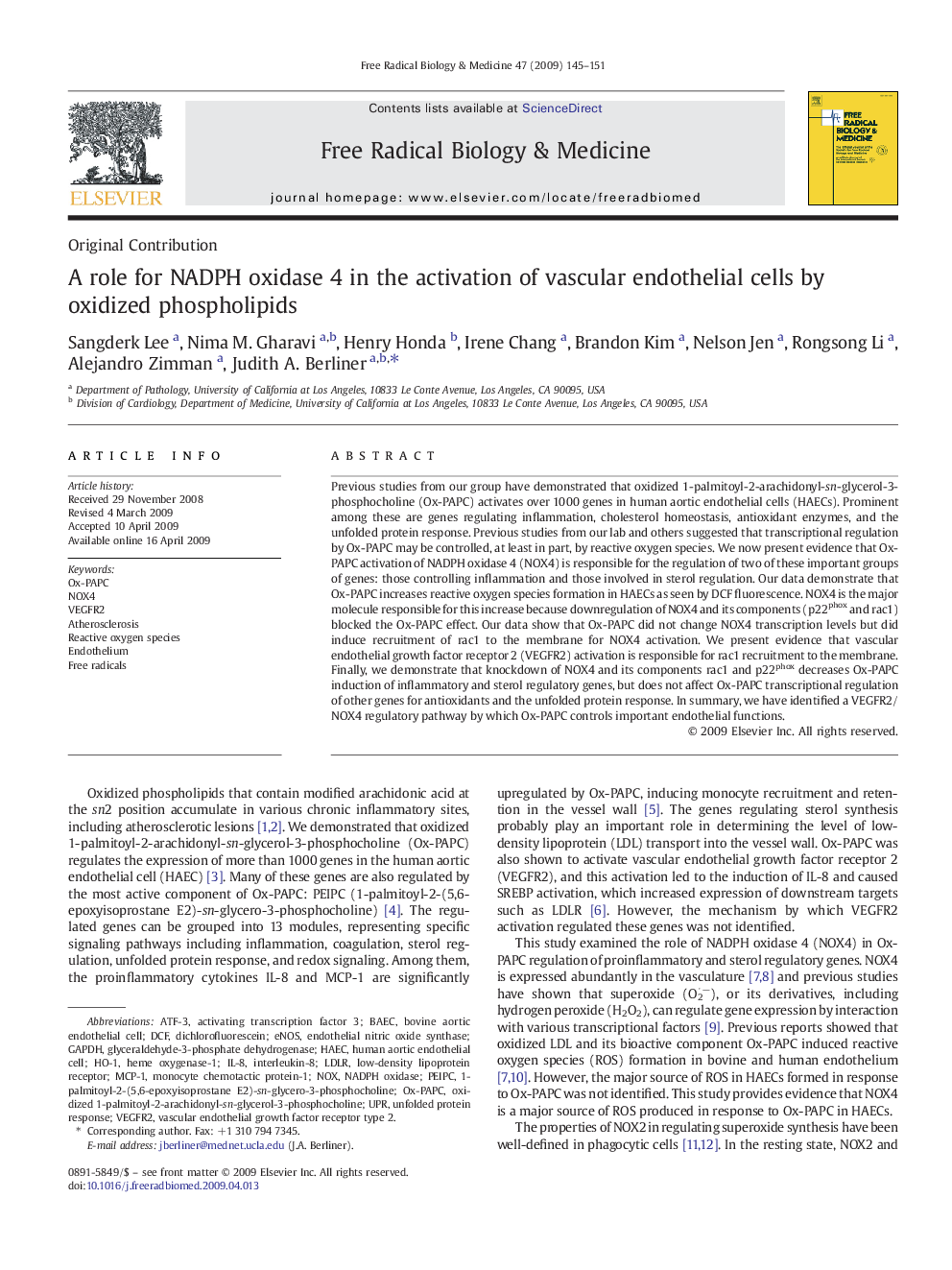| Article ID | Journal | Published Year | Pages | File Type |
|---|---|---|---|---|
| 1910025 | Free Radical Biology and Medicine | 2009 | 7 Pages |
Previous studies from our group have demonstrated that oxidized 1-palmitoyl-2-arachidonyl-sn-glycerol-3-phosphocholine (Ox-PAPC) activates over 1000 genes in human aortic endothelial cells (HAECs). Prominent among these are genes regulating inflammation, cholesterol homeostasis, antioxidant enzymes, and the unfolded protein response. Previous studies from our lab and others suggested that transcriptional regulation by Ox-PAPC may be controlled, at least in part, by reactive oxygen species. We now present evidence that Ox-PAPC activation of NADPH oxidase 4 (NOX4) is responsible for the regulation of two of these important groups of genes: those controlling inflammation and those involved in sterol regulation. Our data demonstrate that Ox-PAPC increases reactive oxygen species formation in HAECs as seen by DCF fluorescence. NOX4 is the major molecule responsible for this increase because downregulation of NOX4 and its components (p22phox and rac1) blocked the Ox-PAPC effect. Our data show that Ox-PAPC did not change NOX4 transcription levels but did induce recruitment of rac1 to the membrane for NOX4 activation. We present evidence that vascular endothelial growth factor receptor 2 (VEGFR2) activation is responsible for rac1 recruitment to the membrane. Finally, we demonstrate that knockdown of NOX4 and its components rac1 and p22phox decreases Ox-PAPC induction of inflammatory and sterol regulatory genes, but does not affect Ox-PAPC transcriptional regulation of other genes for antioxidants and the unfolded protein response. In summary, we have identified a VEGFR2/NOX4 regulatory pathway by which Ox-PAPC controls important endothelial functions.
